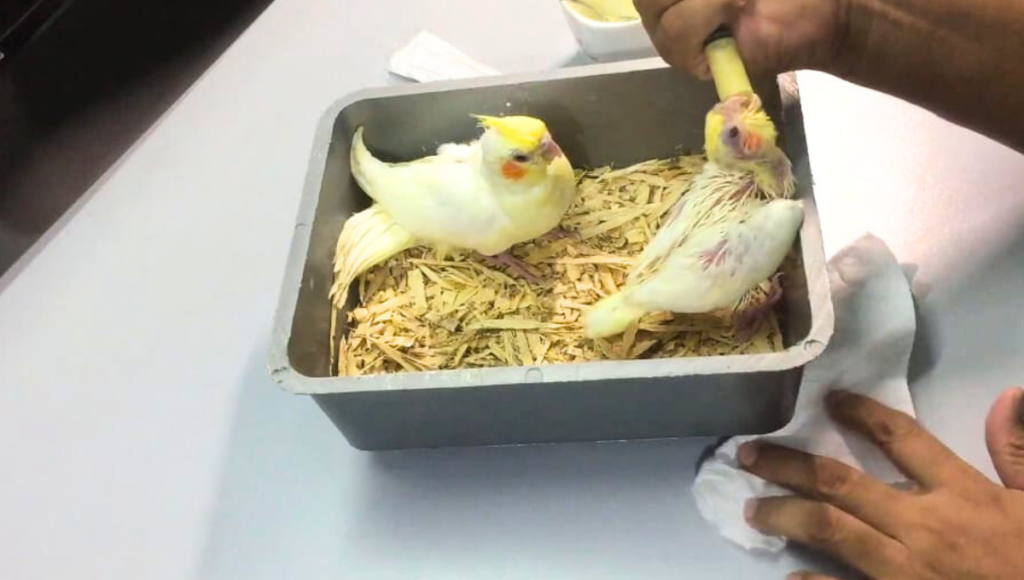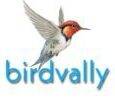If you have a baby cockatiel, you will need to know how to feed it with a syringe. This is not as difficult as it may sound, and it is actually quite simple once you get the hang of it.
- Purchase a syringe from your local pet store
- The size of the syringe will depend on the size of your cockatiel
- Fill the syringe with a cockatiel-safe formula or baby food
- Gently insert the syringe into your cockatiel’s mouth, being careful not to push too far and cause them to choke
- Squeeze the plunger slowly, allowing your cockatiel to swallow the formula or baby food at their own pace.
- Remove the syringe when it is empty and repeat as necessary until your cockatiel is full

How to Hand Feed Cockatiel
If you have a pet cockatiel, you may want to hand-feed it from time to time. This can be a bonding experience for both you and your bird. Plus, it’s just plain fun!
Here’s how to do it:
1. Gather your supplies. You will need some bird seed mix, a small dish or cup, and a piece of fruit or vegetable that your cockatiel likes.
2. Put the seed mix in the dish or cup. Add enough so that the cockatiel can easily grab a beakful.
3. Place the dish or cup within reach of the cockatiel, along with the piece of fruit or vegetable.
4. Encourage the cockatiel to eat by gently pushing its beak into the seed mix and then letting go. The cockatiel should start eating on its own after a few tries. If not, try lightly stroking its back while it eats.
How Do You Feed a Cockatiel Syringe?
Assuming you would like tips on how to syringe feed a cockatiel: First, it is important to only use plain water or an electrolyte solution for hydration and never any type of sugar water as this can lead to health problems. If your cockatiel is not used to being handled, start by gently petting it until it becomes more comfortable with you.
Next, hold the bird in one hand so that its back is facing you and insert the syringe into its mouth at a 45-degree angle pointing towards the back of the throat. Slowly depress the plunger while simultaneously moving the syringe towards the side of the beak until all of the liquid has been administered. Be careful not to aspirate any air into the syringe as this can cause respiratory distress.
Finally, give your cockatiel some time to rest after feeding before handling again.
How Do You Feed a Baby Bird With a Syringe?
When feeding a baby bird with a syringe, you will need to use a small, soft-tipped syringe. The size of the syringe depends on the size of the bird. Fill the syringe with an appropriate food for the bird.
If you are unsure what to feed the bird, you can ask your local veterinarian or wildlife rehabilitator. Gently insert the tip of the syringe into the corner of the baby bird’s mouth. Be careful not to push too far and injure the bird.
Slowly depress the plunger on the syringe and allow a small amount of food to enter the beak. Stop depressing when you see resistance from the beak closing or when liquid starts dripping from its nostrils. If this is the first time the baby bird is being fed, watch closely for any adverse reactions such as difficulty breathing, vomiting or excessive saliva production.
How Much Should I Feed My Baby Cockatiel?
Assuming you are talking about a baby cockatiel that is still being fed by its parents, the amount of food you should give it will depend on its age. For example, a two-week-old cockatiel will need to be fed every two hours, whereas a four-week old can go four hours between feedings. The type of food you give your baby cockatiel is also important – they should be given a diet that consists mainly of seeds and pellets, with some fruits and vegetables mixed in for good measure.
As your cockatiel gets older, you can start to space out its feedings more and more. By the time it is six months old, it can probably be left on its own for up to eight hours without needing any food. Of course, every bird is different – so if you have any concerns about your cockatiel’s diet or feeding schedule, it’s always best to consult with a veterinarian or avian specialist.
How Do You Hand Feed Baby Cockatiels?
Assuming you would like tips on how to hand-feed baby cockatiels: The first step is to obtain the formula and equipment needed. You can either purchase a pre-made formula or make your own (there are recipes online).
Once you have the formula, you will need a syringe or small spoon to feed the bird. It is also important to have a heat source nearby, as baby birds need to be kept warm. A heating pad set on low or a lamp with a 60-watt bulb should do the trick.
Place the heat source underneath half of the brooder so that the chick can move away from the heat if it gets too warm. Now that you have everything ready, it’s time to start feeding! Gently stroke the chick’s throat until it opens its mouth wide; then insert the syringe/spoon into its mouth and release a few drops of formula.
The goal is not to stuff the bird’s crop (the area right under its chin); just give it enough food so that its belly looks full but not distended. Do this every 2–3 hours for newly hatched chicks; they will eat less as they get older and eventually wean themselves off of formula entirely.
Hand feeding cockatiel baby parrot | Cockatiel care Step by Step
Conclusion
If you have a baby cockatiel, you will need to know how to feed it with a syringe. This is not as difficult as it may sound, and it is actually quite simple once you get the hang of it. Here are the steps that you need to follow:
1) Fill the syringe with formula. Make sure that the formula is not too hot or too cold.
2) Gently insert the syringe into the side of the cockatiel’s beak.
3) Slowly squeeze the plunger on the syringe so that formula flows into the cockatiel’s mouth. Do not force-feed your cockatiel; let it eat at its own pace.
4) Once the cockatiel has had enough to eat, remove the syringe from its beak and give it some water to drink.

